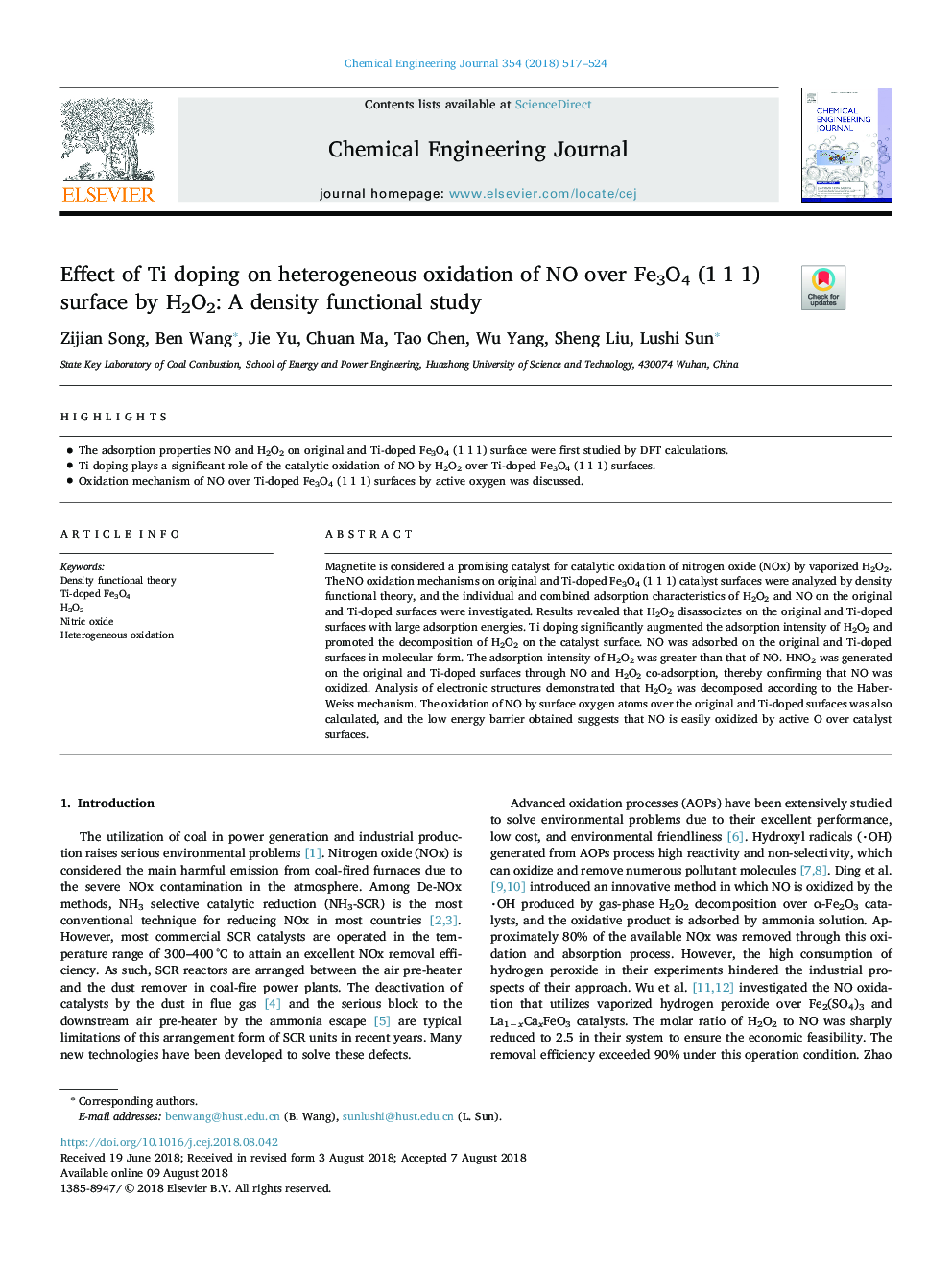| Article ID | Journal | Published Year | Pages | File Type |
|---|---|---|---|---|
| 6577927 | Chemical Engineering Journal | 2018 | 8 Pages |
Abstract
Magnetite is considered a promising catalyst for catalytic oxidation of nitrogen oxide (NOx) by vaporized H2O2. The NO oxidation mechanisms on original and Ti-doped Fe3O4 (1Â 1Â 1) catalyst surfaces were analyzed by density functional theory, and the individual and combined adsorption characteristics of H2O2 and NO on the original and Ti-doped surfaces were investigated. Results revealed that H2O2 disassociates on the original and Ti-doped surfaces with large adsorption energies. Ti doping significantly augmented the adsorption intensity of H2O2 and promoted the decomposition of H2O2 on the catalyst surface. NO was adsorbed on the original and Ti-doped surfaces in molecular form. The adsorption intensity of H2O2 was greater than that of NO. HNO2 was generated on the original and Ti-doped surfaces through NO and H2O2 co-adsorption, thereby confirming that NO was oxidized. Analysis of electronic structures demonstrated that H2O2 was decomposed according to the Haber-Weiss mechanism. The oxidation of NO by surface oxygen atoms over the original and Ti-doped surfaces was also calculated, and the low energy barrier obtained suggests that NO is easily oxidized by active O over catalyst surfaces.
Related Topics
Physical Sciences and Engineering
Chemical Engineering
Chemical Engineering (General)
Authors
Zijian Song, Ben Wang, Jie Yu, Chuan Ma, Tao Chen, Wu Yang, Sheng Liu, Lushi Sun,
